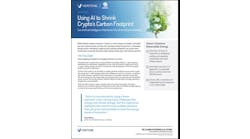UC San Diego Adds DER Testbed to its Array of Clean Energy Technologies
For more than a decade, the University of California San Diego has largely powered its campus with an advanced microgrid, proving that the technology can provide flexible, resilient and reliable energy to more than 43,000 students, faculty and administrators.
Now, thanks to a $42 million grant from the National Science Foundation, the microgrid has been joined on campus by DERConnect, a new testbed designed to help researchers and those in the energy industry understand how distributed energy resources (DER) can be integrated into the power grid.
A ribbon-cutting ceremony for DERConnect was held earlier this month.
Creating the more resilient, decarbonized grid of the future
The new testbed replicates the entire California power grid, according to Jan Kleissl, the project’s principal investigator and a professor in the Department of Mechanical and Aerospace Engineering at the UC San Diego Jacobs School of Engineering.
The DERConnect testbed gives both academics and industry engineers the ability to experiment with a wide range of real-world scenarios at scale by simulating control of the plethora of DERs on the UC San Diego campus.
Among the DERs available to researchers are more than 2,400 light fixtures, 800 smart plugs, EV charging stations and the university’s state-of-the-art microgrid – which includes 2.4 MW of solar arrays, a 2.8-MW energy fuel cell and a 30-MW cogeneration plant.
“We designed DERConnect as a flexible research platform to allow researchers to dig into some of the hardest hardware, software and controls questions related to distributed grids of the future,” Kleissl said.
DERConnect is one of just a handful of large-scale testbeds in the country. Access to such facilities will be critical to validating future technologies and answering the most pressing questions that can only be solved in real-world environments.
It is expected that the facility will be used to develop and validate new distributed control theories, algorithms and applications.
“The reality is that no one knows exactly what the grids of the future will look like. The energy sector is changing fast – and, at the same time, energy demand is rising and the grid-control tools at our disposal, including tools incorporating artificial intelligence, are moving fast and could potentially change the grid landscape,” Kleissl added.
UC San Diego leverages advanced microgrid technologies
UC San Diego’s campus microgrid will be a powerful asset for those working in the DERConnect testbed.
The microgrid provides about 85% of the electricity consumed by the campus each year, 72% of which comes from a highly efficient natural gas-fired combined heat and power cogeneration plant.
Rooftop, carport and ground-mounted solar arrays dispersed across campus also provide power, as does the 2.8-MW fuel cell.
The microgrid also includes a thermal energy storage system, which stores chilled water captured by a 300-ton absorption chiller, as well as a 2.5-MW/5-MWh lithium iron phosphate battery system.








